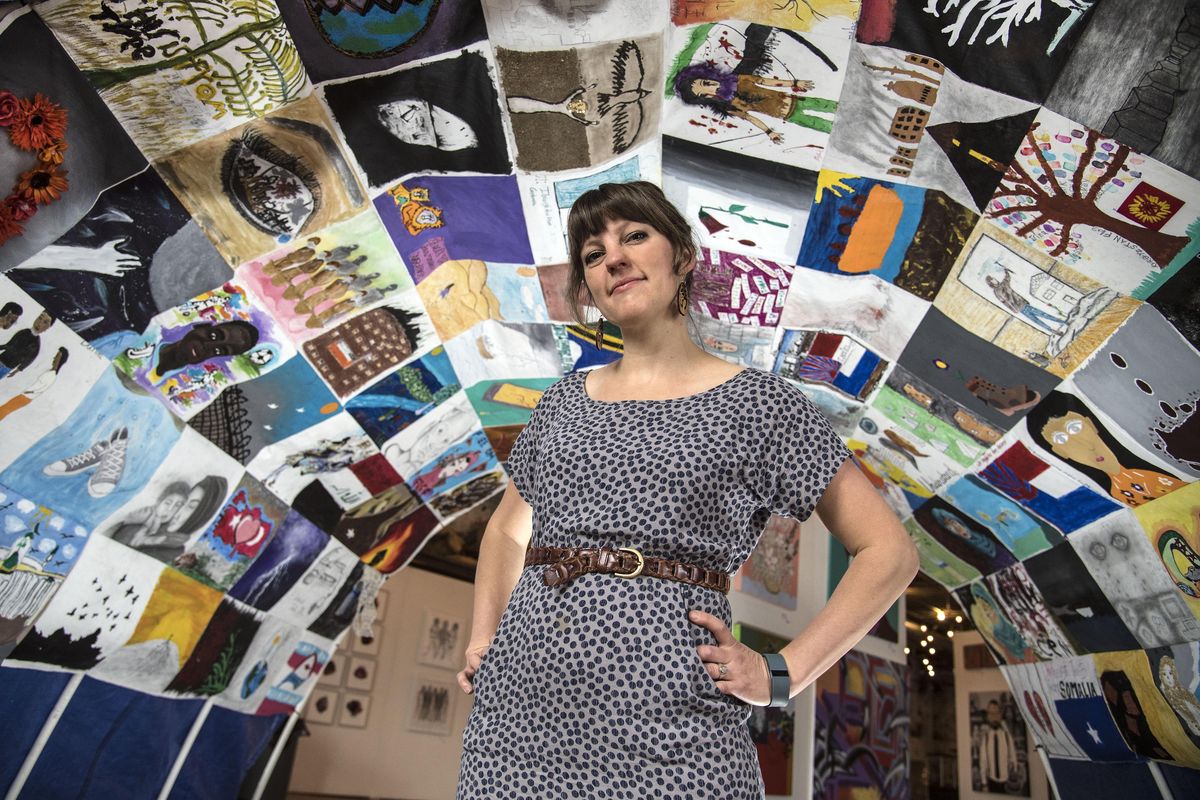Terrain artwork features Ferris students giving voice to the refugee crisis

In the mornings when Lissa Robison would drive to work at Ferris High School, she’d hear stories on the radio about refugees fleeing their homelands, and the dangers they faced.
At the same time, she knew there were tensions between Ferris’ various refugee groups. Students were fighting and forming cliques. The teachers were concerned and wondering what to do.
“I was like, ‘Well, I’m going to make art about this,’ ” Robison said. “Art can change lives. You can show people things with art that you can’t show with words.”
The product of that effort is on display Friday at Terrain 9, Spokane’s annual one-night-only art show and party.
Robison’s four art classes last year produced about 90 individual pieces of art on 18-by-18-inch canvases. Those are stitched together on the inside of a 10-by-20-foot tent. Roughly 30 of those individual pieces were made by refugee students. The whole piece is called the “Ferris Refugee Project.”
The tent consists of a tarp, PVC pipe and parachute cord. The design is modeled after tents refugees use. Each piece of art is generally centered around one of two questions: Why did you have to leave your home? What do you miss the most about your home?
In order to prepare, Robison spent about a week teaching her students the issues and dangers refugees face. They watched movies, spoke to refugee students who attend Ferris, and participated in simulations – like trying to fill out a medical form written in Czech.
“I knew the subject matter was going to be intense,” Robison said. “It was heart-wrenching; we were all crying like every day.”
The artwork the students produced is varied. Some depict violence or fear, while others show the hope starting a new life.
One student, Blen Adugna, painted a line of Ethiopian men being beheaded by Islamic State militants. Adugna’s parents are Ethiopian immigrants. The scene was based on an event that occurred in 2015. In a blurb accompanying her piece, Adugna wrote, “It inspired me to believe stronger in my faith and to paint.”
Adugna used Ethiopian coffee beans to paint the Ethiopian men.
Kendra Divilbiss was a student in Robison’s class last year. She enjoyed the project, partially because it was unique but also because it served a larger purpose.
“We were doing something, and we were giving a voice to people, who don’t necessarily have a voice all the time,” Divilbiss said.
Divilbiss’ section shows three birds flying over a barbed-wire fence, a scene that represents the hope of starting a new life. She was inspired by a Sudanese refugee girl at Ferris.
“They (refugees) are all around us, and I didn’t really recognize that before,” she said.
The process, both of learning about the refugee situation and completing the work, wasn’t easy. One student, a refugee from Afghanistan, painted a face peering through black and red blotches. Above it, the artist wrote “Help Me.”
“I tried to get her to talk about it, and she just started crying,” Robison said.
For Robison, who didn’t return to Ferris this year, the goal of the project was twofold. Primarily, she said, she wanted to build empathy.
“They have no idea what’s happening in the world,” she said of many of her students. “It gives you more of a perspective; it helps you be more compassionate. It helps you be less judgmental.”
The second goal was to give voice to refugee students, many of whom don’t speak English well. Art allows them to express themselves regardless of the language.
And, although the particulars of a refugee’s experience are vastly different than that of most Spokane students, Robison said the underlying feelings are the same.
“Any teenager has felt discriminated or pushed aside,” she said. “Everyone can identify with those feelings.”